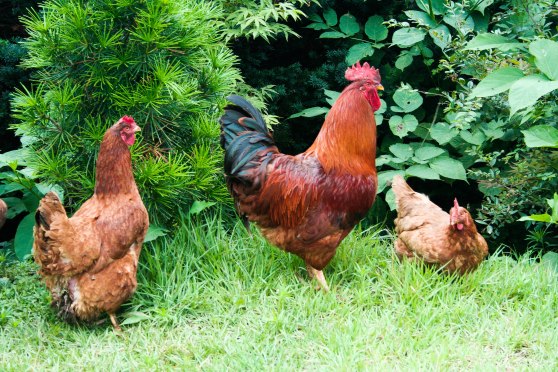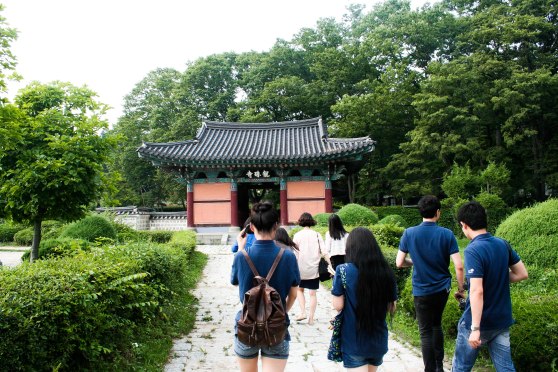Yongjusa – in Korean, it means “temple of the dragon with a magic ball”.
With a history as rich as its name and stretching back to the 10th century AD, Yongjusa is a major temple in the Jogye order of Korean Buddhism.
I had the chance to visit Yongjusa (located in the city of Hwaseong) on a recent trip with Invest Korea / KOTRA (Korea Trade-Investment Promotion Agency). During our trip, we visited a couple foreign-invested companies in Korea’s Gyeonggi region, before grabbing lunch in the countryside.
Needless to say, the fresh air, nature, and calm atmosphere was a welcome change from the usual hustle-and-bustle of Seoul.

Typical Korean-style table setting: tons of small side-dishes surround the main dish, which hadn’t arrived at this point.
After wrapping up lunch, we were back on the bus and on our way to Yongjusa.
Yongjusa was built after a previous temple standing in its place burnt down in the late 800s. Its name, “temple of the dragon with a magic ball”, was chosen after the King who built it had a dream before the construction began. In it, a dragon descended from the heavens holding a magic ball in its mouth.
The King Jeongju of Korea’s Joseon dynasty built the temple as a memorial and tomb to his late father.
Now, it’s a major cultural and historic site located in the city of Hwaseong, just south of Seoul…

Interesting tidbit – the artwork here was inspired by the painter’s visits to Europe, where he saw Orthodox Christian paintings of saints. Can you see the similarities? (mainly the halos)
You can get to Yongjusa through taking subway line #1 to Byeongjeom Station; about an hour and ten minute’s ride from Seoul.
Also, those interested in doing a Templestay at Yongjusa can find out more on their website here.





































